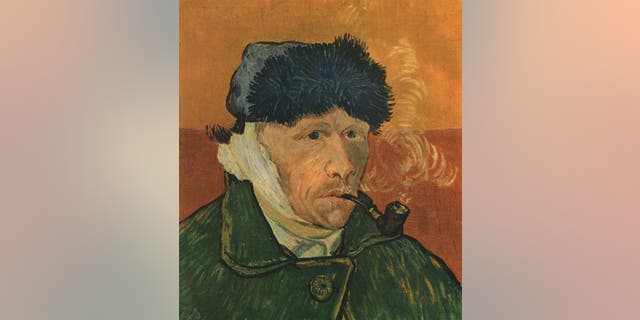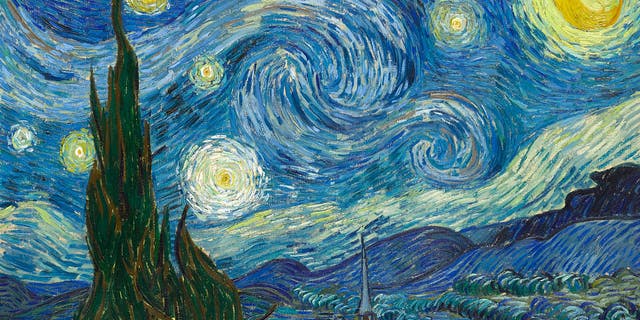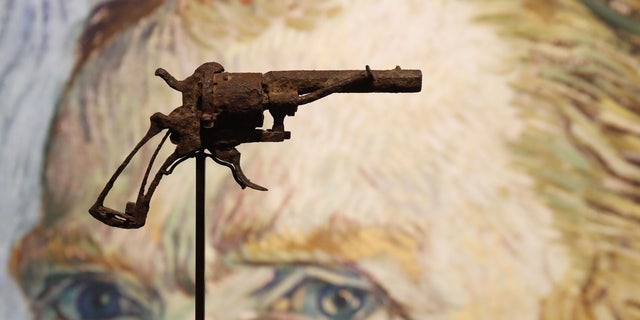[ad_1]
Vincent van Gogh, the brilliant but troubled Dutch impressionist painter, severed his left ear after a “blazing row” with fellow artist Paul Gaugin in Arles, France, on this day in history, Dec. 23, 1888.
The 35-year-old artist famously presented the bloody ear lobe to a female acquaintance outside a brothel. She passed out from shock.
The incident underscored a tragic descent into madness punctuated by stunning displays of productivity and genius in van Gogh’s final months on Earth.
ON THIS DAY IN HISTORY, DEC. 22, 1808, BEETHOVEN’S TRIUMPHANT FIFTH SYMPHONY DEBUTS IN VIENNA
“Although he sold only one painting during his lifetime, Van Gogh is now one of the most popular artists of all time,” the Art Story Foundation writes in its biography of the painter, calling him an “iconic, tortured artist.”
His “radically idiosyncratic, emotionally evocative style has continued to affect artists and movements throughout the 20th century and up to the present day, guaranteeing Van Gogh’s importance far into the future.”

“Self-Portrait with Bandaged Ear and Pipe, February 1889” (1947). Van Gogh (1853-1890) cut off his ear with a razor during one of his periods of mental illness. Painting in a private collection. From “Vincent Van Gogh,” by Ludwig Goldscheider and Wilhelm Uhde (Phaidon Press Ltd, Oxford and London, 1947). Artist Vincent van Gogh.
(Photo by The Print Collector via Getty Images)
The notorious act of self-mutilation still haunts the art world and fascinates people today.
The story has included hazy legend and inaccuracy, according to some art scholars.
FERRIS BUELLER’S WRECKED ‘FERRARI’ SOLD FOR $337,500
“For a long time, the accepted story was that van Gogh gifted the bloody appendage to a woman named Rachel, a prostitute at the brothel [that] van Gogh frequented while living in Arles, in southern France,” notes the Berkeley Library at the University of California, in a 2019 interview with Irish art historian Bernadette Murphy.
“He gave the woman the ear outside the brothel and, according to a local newspaper report, told her to ‘keep this object carefully.’ She fainted on the spot.”
“Although he sold only one painting during his lifetime, Van Gogh is now one of the most popular artists of all time.”
The woman was “traumatized” upon receiving the blood-soaked ear lobe, Murphy said, while adding that the woman was a cleaner, not a prostitute, and her name was Gaby, not Rachel.

Saint Remy, June 1889. Oil on canvas, 29 x 36 1/4 inches (73.7 x 92.1 cm). Located in the Museum of Modern Art, New York, New York.
(Photo by VCG Wilson/Corbis via Getty Images)
“Gaby also worked at a café that van Gogh visited regularly, suggesting a closer connection between the pair than was previously believed,” according to the Berkeley Library account.
Van Gogh checked himself into an asylum the following May.
BIBLE VERSE OF THE DAY: OLD TESTAMENT PROPHET FORESHADOWS ETERNAL IMPACT OF ‘INSIGNIFICANT’ BETHLEHEM
The incident preceded one of the most brilliant periods of artistic expression in van Gogh’s brief, inglorious-in-his-own-time career as an artist.
He painted the dour “Self Portrait with Bandaged Ear” in early 1889 while recovering from his wounds.
“The Starry Night” was painted in June 1889 while van Gogh was in an asylum in St. Remy, France.
“The Starry Night,” perhaps van Gogh’s most famous and most critically acclaimed work, was painted in June 1889 while van Gogh was in an asylum in St. Remy, France.
He created “Wheatfield with Cypresses,” another of his most celebrated pieces, in July.

The pistol thought to be the one used by van Gogh to shoot himself is on public display at the Drouot auction house in Paris.
(FRANCOIS GUILLOT/AFP/Getty Images)
Van Gogh, tired of the frenetic pace after living for two years in Paris, fled for France’s Mediterranean coast, arriving in the Rhone River village of Arles by train on Feb. 20, 1888.
“He longed for the peace of the countryside, for sun, and for the light and color of ‘Japanese’ landscapes, which he hoped to find in Provence, in the South of France,” writes the Van Gogh Museum of Amsterdam.
CLICK HERE TO GET THE FOX NEWS APP
“With this ‘artists’ colony’ in mind, Vincent rented four rooms in the ‘Yellow House’ on Place Lamartine. Paul Gauguin was the first — and, as it would turn out, the last — artist to move in with him.”
Their artistic and personal differences grew increasingly hostile, the museum reports.
Van Gogh died of a gunshot wound to the chest to the chest, reportedly self-inflicted, on July 29, 1890.
“Vincent began to display signs of agitation and when Gauguin threatened to leave, the pressure became too much. Van Gogh became so distraught that he threatened his friend with a razor. Later that evening, he sliced off his own ear at the Yellow House, wrapped it in newspaper and presented it to a prostitute in the nearby red-light district.”
Van Gogh died of a gunshot wound to the chest, reportedly self-inflicted, on July 29, 1890. Some historians suggest he was murdered.
The weapon believed used to kill him sold for $182,000 at a Paris auction in 2019.
Vincent van Gogh was just 37 years old when he died.
CLICK HERE TO SIGN UP FOR OUR LIFESTYLE NEWSLETTER
“Starry, starry night/Paint your palette blue and gray/Look out on a summer’s day/With eyes that know the darkness in my soul,” American songwriter Don McLean wrote in “Vincent,” his achingly beautiful 1971 hit song and ode to the artist’s troubled mind.
“They would not listen, they did not know how/Perhaps they’ll listen now.”
[ad_2]
Source link
(This article is generated through the syndicated feed sources, Financetin neither support nor own any part of this article)
